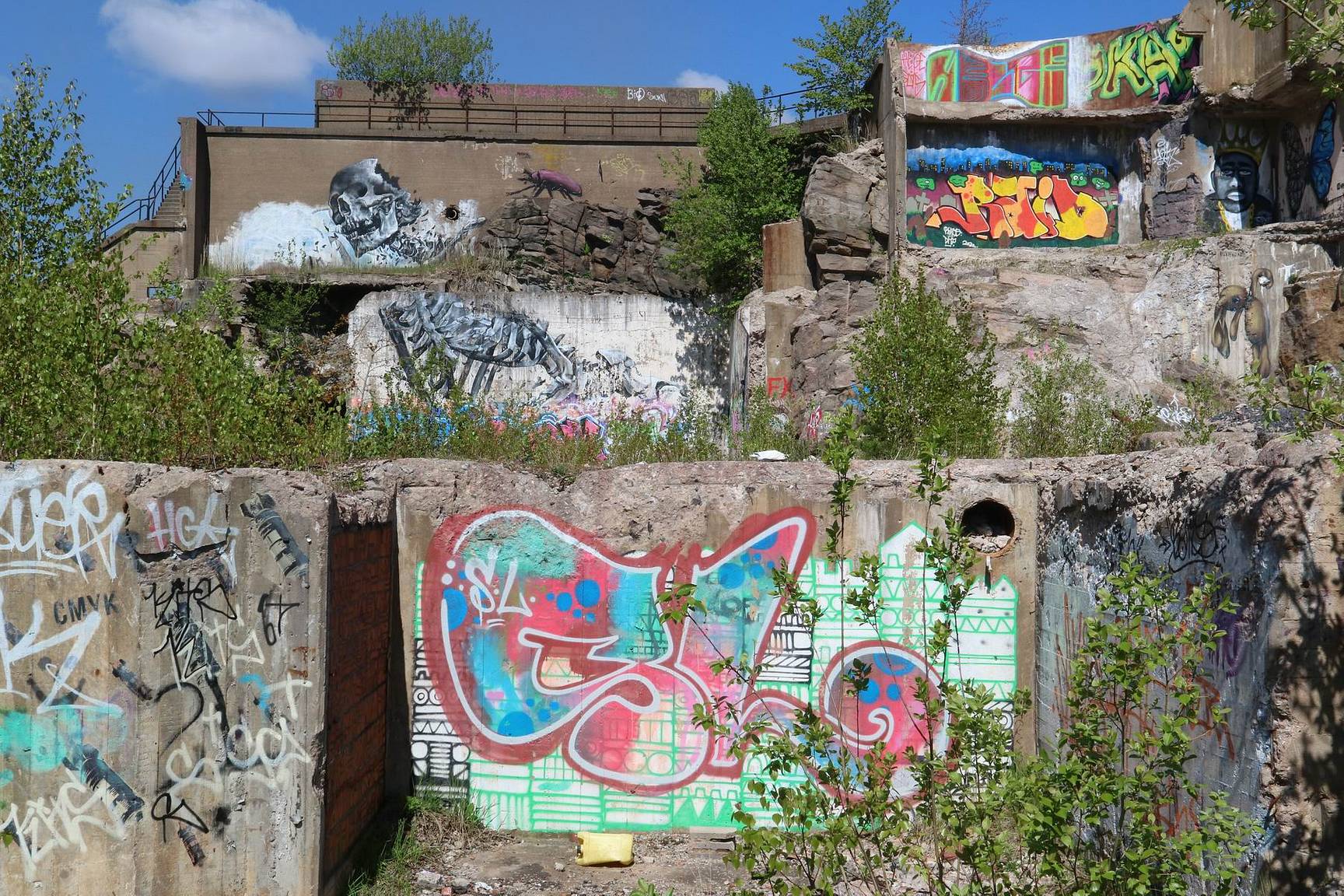Around the World in Analogue: Graffiti Ruins in Vargön
1 12 Share TweetLomographer Magnus Kesselmark, a.k.a. soundbrigade shares his journey to the graffiti ruins of Vargön, a not-so-secret destination that every artist should visit at least once. Located along the Swedish coast, the ruins of the factory became a favored vandalism spot in 2008. Learn how Magnus discover the area himself through his words and his film as well as digital shots.
Woohoo! Here’s Magnus aka Soundbrigade, up and running (or at least biking) in Vänersborg, a small town at the Southern shore of Lake Vänern.
The town was nicknamed Little Paris by one of our country’s famous poets, Birger Sjöberg, who was born here.
Just outside the city perimeters, the village Vargön is situated, sitting next to the Gota River. The river is the only outlet from the lake, but it is regulated by several power dams, the first one next to our graffiti heaven. Across the river are once huge mental institution, that now houses living for immigrants and refugees. To the South are farmland, which once used fertilizers extracted from the two hills that can be seen to the West. The hills are great places to visit and if you’re lucky (or unlucky, ask me) you may run into a moose. So outside the rather dense communities are vast areas of wilderness – forests, hills, rivers, lakes... wildlife).
The village got its name from an island on the river, maybe not because of wolf packs, but maybe the island looked like a wolf’s head. On this island, a paper mill and eventually a smeltery, producing highly specialized metal alloys were erected. The creek that separated the island from firm land was later filled up, but Vargön (or Wargön in original spelling) or Wolf Island in English still was called “island”.
In 2008, the owners of the paper mill closed down the factory and the buildings were torn down. For a period the area was off-limits, due to risks of collapses, and especially the waterfront was said to be very unstable. The politicians had great ideas for this area and the small harbor in the town centre was supposed to be moved to here, but nothing happened. The owner of the photos I enclose put it like this:
“After the closure in December 2008 and the mill's leveling with the ground a few years later, the saved office has in recent years been subjected to extensive vandalization. The final dagger hit came on May 22, 2020, when someone from the “talent reserve” lit a fire on the building.”
The whole deal around the industrial area and its plan was so badly handled by the municipality and politics that you are ashamed to be one of its taxpayers!
So how did I get there?! One day in March, I was out driving, trying out my newly purchased Soviet SLR Start or was it the Voightländer, when I saw a new road leading into the area from “behind”. I couldn’t resist and drove up to the ruins, or concrete walls that once made up the foundation of the paper mill.
What I saw was a huge area with no buildings but the old office building and concrete walls everywhere all covered with graffiti and I took a few photos and called it a day. But when I had the film returned from the laboratory and saw that the film had jammed (or disappointed that I took so few b/w pics?) I went back with the intent to thoroughly ‘document’ the graffiti using my Canon EOS M3 digital camera and the Kershaw 450 medium format with a roll of Kodak Color 135-film.
Now that I once decided that my Lomographic folders only would contain analogue photos (apart from photos of my various cameras) I decided to share the digital images just because they show something very extraordinary, or to be specific, the area where Wargön paper mill once stood is so fantastic – a real outdoor graffiti museum, where anyone, for free can walk and climb and find big paintings as well as itsy bitsy details.
From the people who were fishing from the quay, I heard that youngsters come here every now and then and paint new stuff. However, a few days later another group may come here, cover newly-made paintings with grey paint and make new graffiti. The museum is constantly changing.
What will happen to area is unknown, politicians are too busy doing nothing, so eventually a lot of water will run in the river before something’s done. If someone wants to visit, here’s how to get here. Starting from Gothenburg, there’re trains going directly to Vänersborg, some even stopping in Vargön village and it is maybe a 10-15 minute walk southwards.
From Vänersborg railway station are buses No. 62 and 66 departing every hour to Vargön/Fyrkanten. I think is just passing over the main road keeping South and you are there. or, if that path is blocked, take a longer walk along the main road, turning right at the roundabout and right again a few hundred meters.
Abandoned places thrill me, but in our neighborhood not many of that kind can be found. The SAAB factory is under new government and some operations is still ongoing = not abandoned. There are some derelict railways around here and of course the old locks in neigboring town Trollhättan to visit. But I chose another way to handle my interest in photography.
Lomography isn’t a hobby, electronics and synthesizers are. What I mean is that taking photos with ‘real’ cameras is FUN and whenever I go somewhere I bring a camera, prepared to shoot something that catches my eye. Unlike the various electronics projects that really calls for attention, I never let my cameras dictate me. On occassions I load a camera with some special kind of film in order to go for a theme, like the umbrellas decorating our town center or the photos from the old locks. It’s just about waiting for inspiration or odd ideas popping up in my head.
In my calendar are right now a planned trip to see my siblings to spread our mother’s ashes on the Baltic Sea. That calls for maybe two cameras and a few rolls of film... just in case. Also I spoiled a film roll when going North to visit my youngest son, but maybe I will make another trip soon and try to capture all the cool (historical) things I saw next to the road: old ironworks, a WW2 military airfield, a diesel shunter mounted on a pillar 15ft up, shortly a road trip document.
I really would like to take photos of people, but I feel very uncomfortable when doing that, so I may have to work on that issue. And finally I always try to take a selfie of myself – my signature.
Want to take us Around the World in Analogue? Drop a line to ciel.hernandez@lomography.com with the subject Around the World in Analogue and share your unforgettable travels with the rest of the community! Read the guidelines here. In light of the COVID-19 pandemic, we are hoping everyone's taking necessary measures to remain safe and healthy.
2020-08-07 #culture #places #around-the-world #around-the-world-in-analogue #wolfe-island









































One Comment